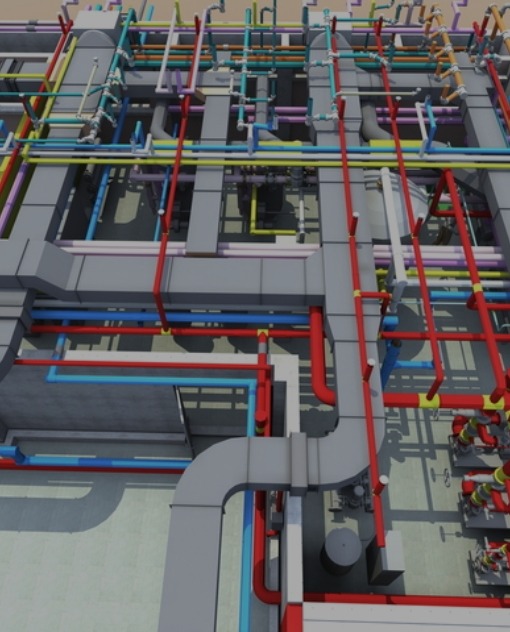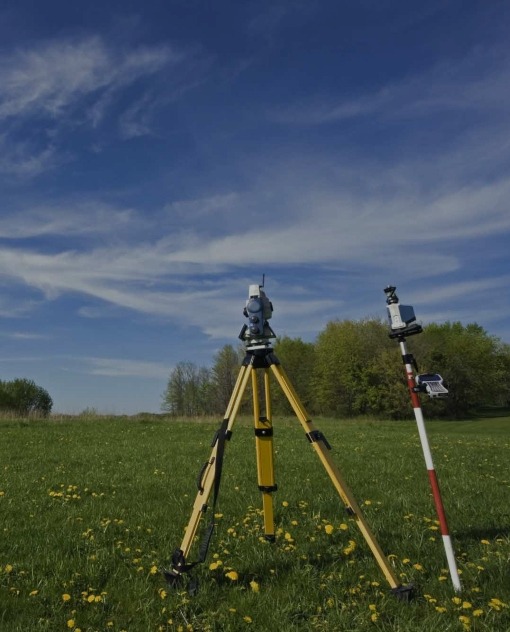Lab Testing
Committed to deliver world-class testing
Testing your products or systems in the field helps mitigate your risk of project failure or lack of compliance. GDRPL's advanced field testing. services assures quality, performance, and compliance of projects before construction. We offer on-site testing for a variety of materials and products. The invaluable data from field testing helps our customers identify problem areas and mitigate your risks before the project begins.

WHAT IS NDT?
Powerful technique for evaluating exiting concrete structures with regard to their strength and durability apart from assessment and control of quality of hardened concrete without or partial damage to the concrete.
Concrete is not loaded to the failure, therefore, the strength inferred or estimated can not be expected to yield absolute value of strength.
NDT measures some other properties of concrete
from which an estimate of its strength , durability and elastic properties are obtained.
Rebound Hammer
To evaluate surface hardness of concrete.
This test is conducted to assess the relative strength of concrete based on the hardness at or near its exposed surface. Rebound hammer measures the elastic rebound from the surface of concrete. The rebound value indicated by the hammer is related empirically to the compressive strength of concrete. Rebound hammer test is used to provide a convenient and rapid indication of the compressive strength of concrete. The test can be performed in horizontal, vertically upward, vertically downward or any intermediate angled positions in relation to the surface.
ULTRASONIC PULSE VELOCITY
To evaluate uniformity and homogeneity for quality assurance of concrete.
The ultrasonic pulse velocity method could be used to establish: the homogeneity of the concrete, the presence of cracks, voids and other imperfections, changes in the structure of the concrete which may occur with time, the quality of the concrete in relation to standard requirements, the quality of one element of concrete in relation to another, and the values of dynamic elastic modulus of the concrete.
RESISTIVITY
To evaluate ability of concrete to resist corrosion activity of reinforcement.
Resipod is a fully integrated 4-point Wenner probe, designed to measure the electrical resistivity of concrete in a completely non-destructive test. It is the most accurate instrument available, extremely fast and stable and packaged in a robust, waterproof housing designed to operate in a demanding site environment.
REBAR SCANNING
To verify steel reinforcement details in existing RCC members.
A Rebar scanning /cover meter is used to ascertain the presence and position of reinforcement in various RCC elements. A cover meter survey is useful to determine existing cover thickness in a specific location, where damage has been identified and elsewhere, for comparison on the same structure. The cover thickness can be measured non-destructively using commercially known cover meters.
PROFOMETER CORROSION
To verify diameter, spacing and location of reinforcement in grid system with two layer facility, can be evaluated for complete corrosion assessment.
The all-in-one solution for rebar assessment for corrosion analysis. This test is used to determine the corrosion potential of rebar in concrete or the electrical resistance of concrete and rebar scanning. Once the reinforcement bar loses its passivity, the corrosion rate depends on the availability of oxygen for the cathodic reaction. It also depends on the concrete, which controls the ease with which ion migrates through the concrete between anodic and cathodic site. Electrical resistance, in turn, depends on the microstructure of the paste and the moisture content of the concrete.
PULL OFF
To evaluate strength of concrete indirect.
The pull-off test is based on the concept that the tensile force required to pull a metal disk, together with a layer of concrete, from the surface to which it is attached, is related to the strength of the concrete.
PULL OUT(CONCRETE)
To evaluate tensile strength of concrete.
The pull out test is based on the concept that the strength of the concrete is related to the maximum tensile load that can be applied to an embedded insert before the concrete fails. The insert is either cast into the fresh concrete or installed in hardened concrete.
PULLOUT(ANCHOR BARS/ROCK BOLTS)
For evaluation of bond strength between reinforcement and grout concrete or grout concrete and rock.
The main purpose of the test is to obtain understanding of the load bearing capacity of fully grouted rebar with different water-to-cement ratios and variations in embedment length. The pull out test measures the force needed to extract an embedded insert from a concrete mass.
CONCRETE CORE
To measure actual in-situ compressive strength of concrete.
Direct assessment on strength can be made by extracting & testing of 50mm (2”) to 200mm (8”) diameter core. Core can be extracted about 400mm continuous length & up to 900mm depth in two layers with the help of extension rod. Cover meter is used to locate the reinforcement steel before core cutting to prevent structural damage to the RCC elements by avoiding the reinforcement. These cores are dressed, capped and tested in laboratory using standard compression testing method to determine compressive strength.
CARBONATION OF CONCRETE
For assessment of possibility of corrosion of reinforcement.
Carbonation of concrete in cover results in loss of protection to the steel against corrosion. The depth of carbonation can be measured by spraying the freshly fractured concrete surface with a 0.2% solution of phenolphthalein in ethanol. Since phenolphthalein is a pH indicator, the magenta (pink colour) area presents noncarbonated concrete and the remaining (colourless) portion, the carbonated area.
RAPID CHLORIDE IRON PENETRATION
RCPT is a rapid test that indirectly measures the permeability of concrete. This test method overs the determination of the electrical conductance of concrete to provide a rapid indication of its resistance to the penetration of chloride ions.
ULTRASONIC FLOW DETECTION TEST
To determining the size and location of discontinuities within a component using high frequency sound waves.
This technique is used for the detection of internal and surface (particularly distant surface) defects in sound conducting materials. It is also very common for UT to be used to gauge the thickness of materials with parallel surfaces (such as pipe wall thickness).
MAGNETIC PARTICLE TEST
For detection of surface and near surface discontinuities in magnetic material.
This method is suitable for the detection of surface and near surface discontinuities in magnetic material, mainly ferrite steel and iron. The principle is to generate magnetic flux in the article to be examined, with the flux lines running along the surface at right angles to the suspected defect.
LIQUID (DYE) PENETRANT TEST
To determine the surface discontinuities only.
This method is frequently used for the detection of surface breaking flaws in no ferromagnetic materials. The subject to be examined is first of all chemically cleaned, usually by vapour phase, to remove all traces of foreign material, grease, dirt, etc. from the surface generally, and also from within the cracks.
RADIOGRAPHY- X AND GAMMA
For detection of internal defects in ferrous and non-ferrous metals & other materials.
This technique is suitable for the detection of internal defects in ferrous and nonferrous metals and other materials. X-rays, generated electrically, and Gamma rays emitted from radio-active isotopes, are penetrating radiation which is differentially absorbed by the material through which it passes; the greater the thickness, the greater the absorption. Furthermore, the denser the material the greater the absorption.
ULTRASONIC THICKNESS TEST
Ultrasonic Thickness Measurement (UTM) is a method of performing non-desctructive measurement (gauging) of the local thickness of a solid element (typically made of metal, if using ultrasound testing for industrial purposes) basing on the time taken by the ultrasound wave to return to the surface. This type of measurement is typically performed with an ultrasonic thickness gauge.
VIBRATION MEASUREMENT
Vibration is measured and analysed for design, control, fault diagnosis, and vibration monitoring purposes.
PILE LOAD TEST
Pile load test is the most direct method for determining the safe loads on piles including its structural capacity with respect to soil in which it is installed. It is considered more reliable on account of its being in-situ test than the capacities computed by other methods, such as static formula, dynamic formula and penetration test data.
LATERAL
The test may be carried out by introducing a hydraulic jack with gauge between two piles or pile groups under test or the reaction maybe suitably obtained otherwise. If it is conducted by jack located between two piles or groups, the full load imposed by the jack shall be taken as the lateral resistance of each pile or group.
UPLIFT/PULLOUT
The objective of Pull out pile load test is to evaluate the safe load carrying capacity of existing pile in Uplift direction and uplift behaviour by pull out load test method.
VERTICAL COMPRESSION
In this type of test, compression load is applied to the pile top by means of a hydraulic jack against rolled steel joist or suitable load frame capable of providing reaction and the settlement is recorded by suitably positioned dial gauges. Maintained load method should be used for determination of safe load.
PLATE LOAD TEST
The main objective of carrying out the Plate Load Test is to check the settlement for the safe bearing capacity of soil in place.
LOW STRAIN PILE INTEGRITY TEST
Pile Integrity Testing (PIT) is a Non-Destructive integrity test method for foundation piles. The method evaluates continuity of the pile shaft and provides information on any potential defects due to honeycombs, necking (cross-section reduction), potential bulbs, sudden changes in soil stratum, concrete quality in terms of wave speed etc.
HIGH STRAIN DYNAMIC LOAD TEST
High strain dynamic testing is a method of testing deep foundations to obtain information about their capacity and integrity, and in some cases, to monitor their installation.
CROSS HOLE SONIC LOGGING
Cross hole sonic logging (CSL) is a method to verify the structural integrity of drilled shafts and other concrete piles.
GROUND PENETRATING RADAR
Ground penetrating radar (GPR) is a geophysical method that uses radar pulses to detect subsurface objects, changes in material properties, voids and cracks.
BRIDGE & SLAB LOAD TEST
For assessment of possibility of corrosion of reinforcement.
The objective of Bridge load& Slab load test is to evaluate the flexural capacity and deformation in superstructure at most critical section at which maximum bending moment occurs. Moreover, percentage of recovery (Elastic Performance) and developed of new cracks or expansion the existing one is also observed.
BLOCK VIBRATION TEST
The objective of Block vibration test is to evaluate the dynamic properties of soil, especially for the dynamically loaded machine foundation design.
NUCLEAR DENSITY GAUGE
Nuclear density gauges are testing devices that use low level radiation to measure the field wet density, dry density and field moisture content of soil and granular construction materials.
CONSULTANCY SERVICES FOR ASSESSMENT OF STRUCTURAL STABILITY AND SUGGESTING REHABILITATION MEASURES FOR DETERIORATED STRUCTURE:
India is such a country where many existing structures have got reduced strength in due course of time. These structures have got reduced their effective life span from 100 years to 20-30 years, which leads to a situation in which they became not able to fulfil the purpose for which they were built. Sometimes, there is also the need to improve the conditions offered by existing structures or to adapt them to new functions. If further use of such deteriorated structure is continued it may endanger the lives of the occupants and surrounding habitation.
Is your structure is depreciating before time?
Do you want to save your valuable investment going to be dying before time? What is a Solution?
Get your structure inspected at regular interval and get a detailed health assessment report along with remedial measures. Structural Audit is an overall health and performance check-up of a building like a doctor examines a patient. It ensures that the building and its premises are safe and have no risk. It analyses and suggests appropriate repairs and retrofitting measures required for the buildings to perform better in its service life. Structural audit is done by an experienced and licensed structural consultant.
Structural audit has been enforced mandatorily for all the structures more than 15 years old by the competent authority in recent past.
We offer our best services to solve your problems with a qualified team of engineers, structural experts & latest NDT equipment. This approach ensures scientific and engineered approach to understand and diagnostic the problem which leads to most appropriate and cost effective solution for enhancement in service life.
OUR VALUABLE CUSTOMER:
We are working with private, corporate, government and semi government bodies. We have large number of satisfied clients in our list. A few of them are given below.
Government & Semi Government Sector
- Airport Authority of India
- Vadodara Municipal Corporation (VMSS)
- Surat Municipal Corporation (SMC)
- Vadodara Urban Development Authority (VUDA)
- Bank of India (BOI)
- Bank of Baroda (BOB)
- (Road & Building Dept.) Gujarat State
- Gujarat State Road Transport Corporation (GSRTC)
- Gujarat Electricity Board (GEB)
- Gujarat State Police Housing Corporation Limited (GSPHCL)
- Gujarat Industrial Development Corporation (GIDC)
- Gujarat Alkalise And Chemicals Limited (GACL)
- Gujarat Maritime Board (GMB)
- Indian oil corporation Limited (IOCL)
- National Highways Authority of India(NHAI) Oil & Natural Gas Corporation Limited (ONGC)
- Special Economy Zone Dahej (SEZ)
- Gujarat Energy Transmission Corporation Limited (GETCO)
- Electrical Research and Development Association (ERDA)
- Gujarat Mineral Development Corporation Limited (GMDC)
- Gujarat State Electricity Corporation Limited (GSECL)
- Gujarat State Fertilizers & Chemicals Limited (GSFC)
- Gujarat Narmada Valley Fertilizers & Chemicals Limited (GNFC)
- Bharat Heavy Electrical Limited (BHEL)
- Military Engineers Services (MES)(Under ministry of Defence)
- Indian air force
- NTPC Limited
- Narmada Water Resources Water Supply & Kalpsar Department
- Power Grid Corporation of India Limited
- Project Implementation Unit (PIU)
Private Sector
- Alembic Chemicals Works Limited, Baroda
- Enercon India Limited
- Larson & Toubro Limited, Baroda
- M.S.K. Projects India Limited, Baroda
- Multi Mantech International (P) Limited, Ahmedabad
- National Builders
- VRC Construction, Dahej
- Rohan Builders, Jhagadia
- Siemens Limited, Dahej
- Bridge & Roof Construction, Baroda
- Rachana Construction, Baroda
- Hindustan Dorr Oliver, Dahej
- Sterling Biotech, Baroda
- Dodsal Engineering and Construction India Pvt. Limited
- Suzlon Gujarat Wind Park Limited
- INOX Wind Infrastructure Services Limited
- Gujarat Fluorochemicals Limited
- Pawan Infra Homes, Baroda
- NRS Projects, Baroda
- Silver Height, Rajkot
- APM Terminals, Pipavav
- Asian Paints, Ankleshwar
- United Phosphorus Limited, Halol
- Madhav Infrastructure Pvt. Limited, Baroda
- LNG Petronet, Dahej
- Tebodin Consultant & Engineers, Ahmedabad
- TUV SUD South Asia
- Torrent Power, Dahej
- Nirma Limited, Ahmedabad
- Stellar Chemical Laboratories Pvt. Limited (SSL)
- Deepak Nitrite Limited, Nandesari
- DGEN Dahej
- IL & FS Engineering and Construction Company Limited
- Patel Infrastructure Pvt. Limited
- Ultratech Cement Limited
- SMP Construction
- M.V. Omni Projects (India) Limited
- Corrtech International Pvt. Limited
- KEC International Limited
- Ganges international
Project List
Consultancy Work for Inspecting, Testing & Remedial Measures for Repairing /Rehabilitation of Natural Draft Cooling Tower Unit # 3, 4 & 5 at Gandhinagar, TPS Gandhinagar.
Conducting various ND Test including Rebound Hammer, Ultrasonic Pulse Velocity, Pull Out, Half Cell Potential & Chemical Analysis like Carbonation, pH, Chloride & Sulphate Test, preparation of repoft, remedial measures & estimate with item and specifications as per the requirements, tender documents including commercial conditions in consultation with GSECL, drawings for bid purpose/ evaluation of offers, recommendations for acceptance of tender, assisting GSECL for finalization of order, scrutiny of vender's design criteria, design calculations, design drawings, release of construction drawings & to render services as and when required by GSECL.
Provide consultancy services for assessment of stability and suggest remedial/ rehabilitation measures for the following buildings:
Kuberbhavan at vadodara a nine storey RCC framed structure.
Ideal School & Hostel at vadodara. G+3 storeys RCC frame structure.
Stage-I : In-situ investigation for strength (grade) of concreteand up to date appraisal of the condition of the building with respect of distressif any. Verification of the typical sections whether they are as per drawing or not i.e. rebar and their details etc.
Stage-II : Safety appraisal of the building based on the outcome of the investigations at Stage-I.
Stage-III : To propose a rehabilitation scheme and retrofi requirement if the present structural condition of the building is not complying with currently acceptable standards including preparation of execution drawings.
Structure Strengthening Consultancy work for DVACL & MPBAD Plant By conducting NDT of Concrete & Steel structures, Geotechnical investigation, Survey, Provide the remedial measures for repairs & retrofitting of the structure at UPL plant, Vapi.
Tests required for assessment, Consultancy against corrosion protection Preparation of As Built Drawing of the Plant, Preparation of Repair & Retrofitting plan based on test results, Prepare distress mapping drawing Prepare Detailed BOQ, Estimate for Repair work, Prepare repair and retrofitting plan based on test results.
The work of Survey and Non-Destructive Tests i.e. Dimensional survey of the existing structure, Concrete strength assessment, Survey of reinforcement within concrete member on Marine structures(JETTY) at APM Terminals, Pipavav.
Kuberbhavan at vadodara a nine storey RCC framed structure.
Ideal School & Hostel at vadodara. G+3 storeys RCC frame structure.
Part-I : Dimensional Validation of the Structure
Part-II : Concrete Strength Assessment by conducting Rebound Hammer test, Concrete Core strength test
Part-III : Survey of reinforcement within concrete members
Residual Life Assessment of 2 X 250 MW Dahanu Thermal Power Station (Unit-01).
To visual examine the site. To conduct Non-destructive tests: Rebound Hammer, UPV, Half cell potential, Profometer rebar detection / Cover meter & Core for RCC elements. To carryout Non-destructive tests: PT/MT & UT for turbine deck vibration isolation system. To submit draft and final report with recommendation & conclusion for repair & retrofitting scheme based on test results.
Non-Destructive Testing (NDT) For Various Major Bridges In Surat City
-Railway over bridge in lieu of level crossing No. 146 near sumul dairy
-Existing railway over bridge near saroli village on surat-olpad road
-Sardar vallabhbhai patel bridge across river tapi
with flyover bridge near Athwa gate junction
-Elevated road from railway station to Maan darwaja on ring road(Dr. Baba saheb Ambedkar fly over bridge)
-Bridge across river tapi joining Nana
varchha and Mota Varachha (Savjibhai Korat)
-Bridge across river tapi near amroli (Old)"Pandit Shyamji Krishna Verma" bridge across river Tapi near Amroli
-Low level submersible bridge across
river tapi near makaipool (Swami vivekanand bridge)
To conduct Non/Semi-destructive tests: Ultrasonic Pulse Velocity (USPV), Half cell potential, Concrete Core Test, Vibration meter test, Ground Penetrating Radar(GPR) test, Endoscope test, Concrete Cover test, Water testing, Total Station Survey.

MATERIAL TESTING LABORATORY
GDRPL has experience across the construction materials testing industry – from routine laboratory testing to providing clients with specialized and unique solutions to emerging industry challenges. We strictly adhere to NABL standards. National Accreditation Board for Testing and Calibration Laboratories (NABL) is an autonomous body under the aegis of Department of Science & Technology, Government of India, and is registered under the Societies Act. NABL has been established with the objective to provide Government, Industry Associations and Industry in general with a scheme for third-party assessment of the quality and technical competence of testing and calibration laboratories. Government of India has authorized NABL as the sole accreditation body for Testing and Calibration laboratories.
We provide Physical and Chemical Testing for all Civil Engineering material as per BIS / BS / ASTM / ISO standards like Soil, Rock, Steel, Cement, Aggregate, Sand, Bricks, Concrete, Cube, Tiles, Wood, Fly Ash, Mix Design, Bitumen, Geo Membrane / Textile, PVC-HDPE-LDPE, Rubber, Paint etc. We also have Optical Emission Spectrometer Q4 TASMAN German make BRUKER Elemental GmbH for chemical analysis of metal.
- BUREAU OF INDIAN STANDARD (BIS)
- BRITISH STANDARD (BS)
- AMERICAN STANDARD (ASTM)
- INTERNATIONAL STANDARDS (ISO)
Our Reports & MIS is supported by LIMS Software.

CONSTRUCTION MATERIAL TESTING
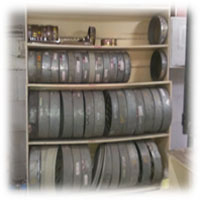
Gradation
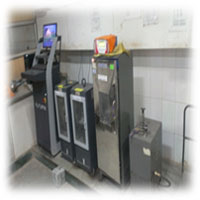
Cube/Brick Test

Steel

Bricks

Tiles
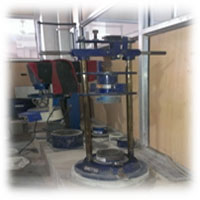
Aggregate

Cement

Water
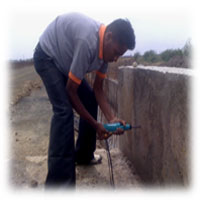
Rebound Hammer
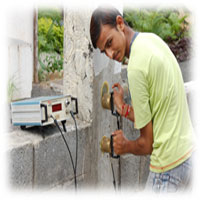
Ultra-Sonic Pulse Velocity

Thermo Photography

Concrete Core Cutter
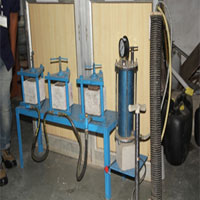
Concrete Permibility
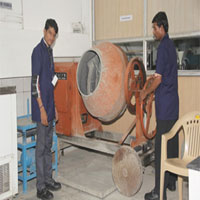
Concrete Mix Design
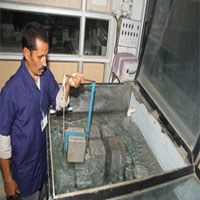
Chlorine Tank

Consolidation

Swell Pressure Instrument
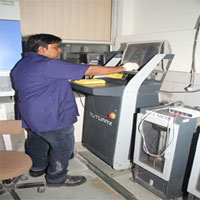
CTM Machine

Lab Test - 1
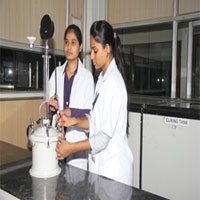
Lab Test - 2
CONSTRUCTION MATERIAL EQUIPMENTS

Compression Testing Machine

Flexural Testing Device

Free Falling Dart Impact Tester

Computerised Universal Testing Machine
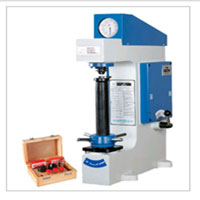
Rockwell Hardness Testing Machine
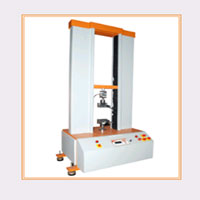
Free Falling Dart Impact Tester
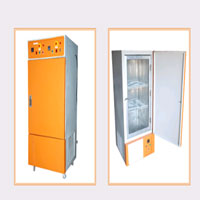
Zero Degree Bath
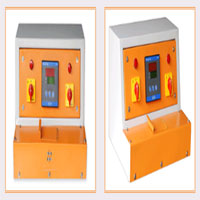
Opacity Tester
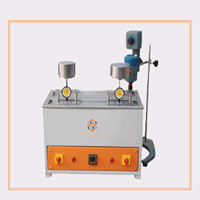
Vicat Softening Point Machine
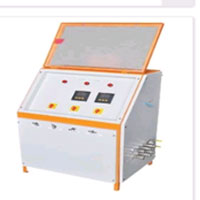
Pipe Burst Tester
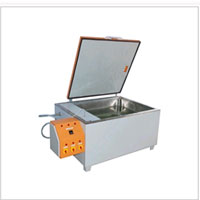
Hot/Cold Water Bath

HIGHWAY LAB TESTING
Our Highway laboratory is one of the Civil engineering Laboratories which is fully equipped and supported by highly qualified technical staff to respond to the needs of academic institutions, researchers
and Engineers.
Our Laboratory is NABL Accredited (ISO/IEC: 2005) [Certificate No : T 1941]. It is equipped with the apparatus needed for highway materials (i.e. Aggregates, Bitumen , Bitumen
Emulsion, Soil, Cement, etc.) , which include Mix designs for Flexible pavements (i.e for Granular layers, Binder Course and Wearing Course) & Concrete Pavements (i.e. for Pavement Quality Concrete
& Dry Lean Concrete) & for Field Tests (i.e. Benkelmen Beam Deflection Test & Roughness Test).
Equipments for Highway Laboratory:
- Standard and Modified Marshall Compactor Apparatus.
- Stability and Flow Apparatus.
- Penetration Apparatus.
- Softening Point Apparatus.
- Ductility Test Apparatus.
- Centrifuge Extractor.
- Pensy Martens Test Apparatus.
- Polished Stone Value Apparatus.
- Bath for Absolute and Kinematic Viscosity test for Bitumen.
- Thin Film Oven.
- Apparatus for Particle charge of Emulsion.
- Saybolt Furol Viscometer.
- Concrete Mixer.
- Compressive Strength Test Apparatus.
- CBR Apparatus.
- Standard and Modified Proctor Test Apparatus.
- Impact Value Test Apparatus.
- Crushing Value Test Apparatus.
- Abrasion Test Apparatus.
- Benkelmen Beam Test Apparatus.
- Bump Integrator Apparatus.

All the tests are performed as per the reference standards - (BIS, AASHTO, ASTM, MORT&H (5th Revision), MS-2, BS, IRC etc.)
All the tests are performed by highly qualified engineers and technicians who are constantly supervised by experienced faculties in order to assure the compliance of these tests with the standards.
Quality assurance of material testing is maintained periodically by checking the calibration of equipments and upgrading with the new technology.

Abrasion Value Test Apparatus

Absolute Viscosity Test Apparatus

Centrifuge Extractor

Cooling Water Bath

Ductility Test Apparatus

Lab Test - 1

Lab Test - 2

Lab Apparatus
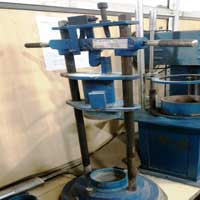
Impact Value Test Apparatus
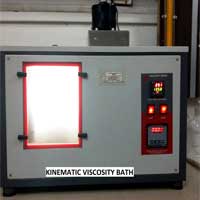
Kinematic Viscosity Bath

Marshall Stability Apparatus
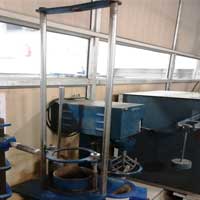
Modified Marshall Mould Assembly
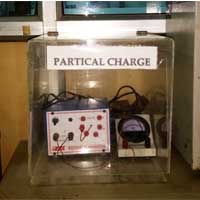
Particle Charge
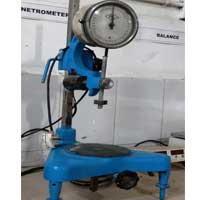
Penetration Test Apparatus
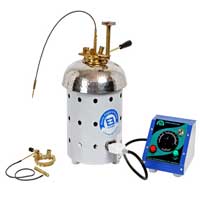
Pensy Martens Closed Tester

Polished Stone Value
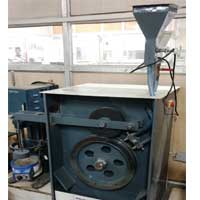
Ring & Ball Apparatus
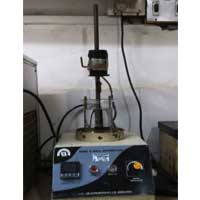
SayBolt Furol
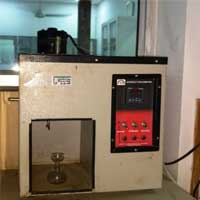
Thin Film Oven
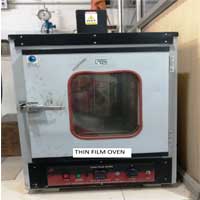
Benkelmen Beam Deflection Test Apparatus
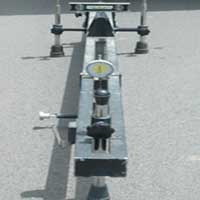
Bump Integrator
All Expertise
Architecture Design & Consultancy
GDPRL has a dedicated team of designers that provide exemplary architectural and structure design services to our clients.
Read MoreCommerce & Contract Management
Testing your products or systems in the field helps mitigate your risk of project failure or lack of compliance.
Read MoreLab Testing
Testing your products or systems in the field helps mitigate your risk of project failure or lack of compliance.
Read More

